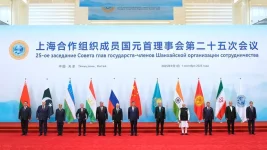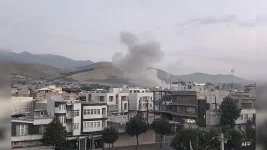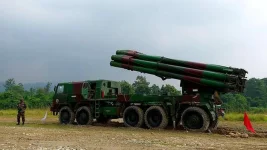- Views: 2K
- Replies: 17
A distinguished veteran of the Indian Air Force (IAF) has issued a serious warning about a potential decade-long period where India could face a critical disadvantage in air power against China.
Sameer Joshi, a former Mirage-2000 pilot and Kargil War veteran, raised the alarm following the emergence of new images of China's prototype sixth-generation stealth fighter, reportedly named the J-50.
His analysis suggests a "window of ambiguity" until at least 2035, during which the IAF may be technologically outmatched by the People's Liberation Army Air Force (PLAAF).
The Core of the Concern
In a widely circulated social media post, Joshi cautioned that until India's indigenous fifth-generation Advanced Medium Combat Aircraft (AMCA) is inducted, the IAF might find itself relegated to a "Team B" status.He explained that while India's upgraded fleet of 4.5-generation jets is formidable, it would face a superior adversary in China’s growing arsenal of fifth and sixth-generation aircraft.
Joshi, who now heads the defence technology firm NewSpace Research & Technologies, further warned that advanced stealth and long-range weapons could negate the natural defence offered by the Himalayan terrain, a long-standing strategic advantage for India.
China’s Rapid Aerospace Advancement
The catalyst for this warning is the Shenyang J-50, a futuristic fighter prototype recently photographed undergoing tests in China.This aircraft displays characteristics of a sixth-generation platform, including a tailless, blended-wing body for maximum stealth, advanced engine inlets, and capabilities for AI-driven autonomous flight.
These features are comparable to those in next-generation programs in the United States. This development comes as the PLAAF is already expanding its fleet of the J-20 'Mighty Dragon', its operational fifth-generation fighter, with estimates placing their numbers at over 300.
This combination of existing and future aircraft threatens to create a significant technological and numerical gap in the region's air power balance.
India's Current Modernisation and Future Plans
The Indian Air Force is in the midst of a significant but transitional modernisation phase.Its strength is being boosted by the indigenous Tejas Mk1A, additional Dassault Rafales, and a major upgrade program for the Su-30MKI fleet, which includes new radars and the integration of BrahMos supersonic missiles.
These platforms, armed with potent missiles like the European Meteor and the Indian Astra, are designed to ensure the IAF remains a powerful force.
However, Joshi's critique highlights that these are 4.5-generation enhancements, which may struggle to counter the advanced stealth and networked warfare capabilities of true fifth and sixth-generation opponents.
This is compounded by the IAF's current squadron numbers, which stand at around 31, well below the officially sanctioned strength of 42 required to meet a two-front challenge.
The AMCA: India’s Answer and Its Delays
India's definitive counter to this emerging threat is the Advanced Medium Combat Aircraft (AMCA).Developed by the Aeronautical Development Agency (ADA), the AMCA is envisioned as a cutting-edge stealth fighter equipped with supercruise (the ability to fly at supersonic speeds without afterburners), internal weapons bays, and potentially directed energy weapons.
This aircraft represents the "Team A" capability the IAF needs to restore technological parity.
However, the project's timeline remains a major concern.
Critical delays, particularly in finalizing a partnership for the co-development of a high-thrust jet engine, could push the AMCA's operational induction beyond the projected 2035 timeframe, creating the very "window of ambiguity" that Joshi warns about.
This period of uncertain deterrence could present a significant challenge to India's national security.



